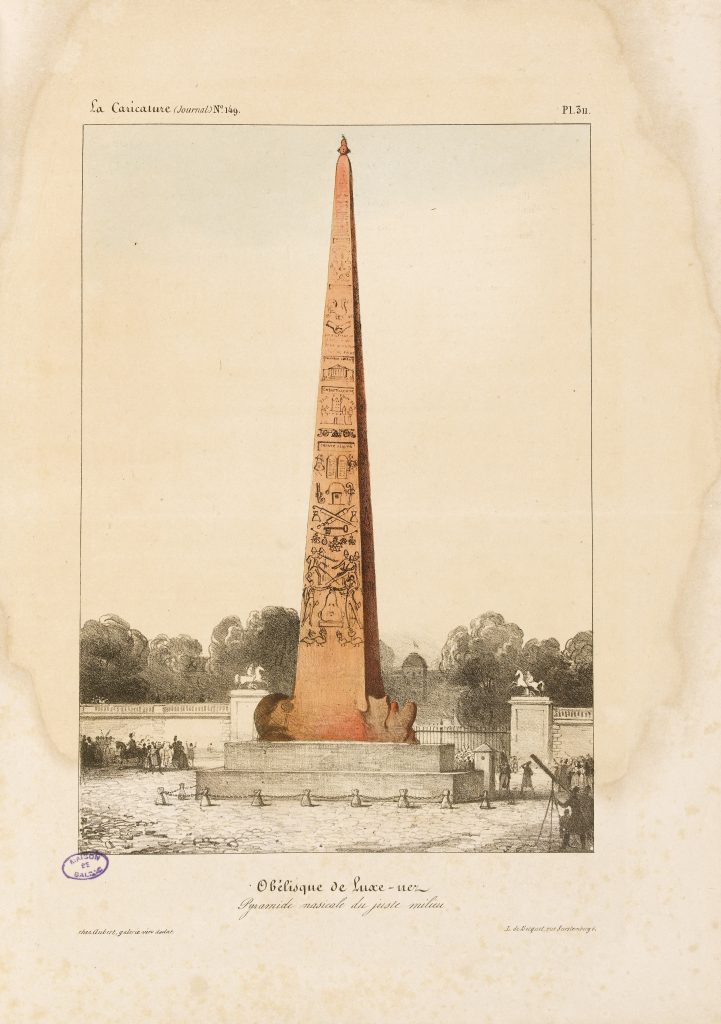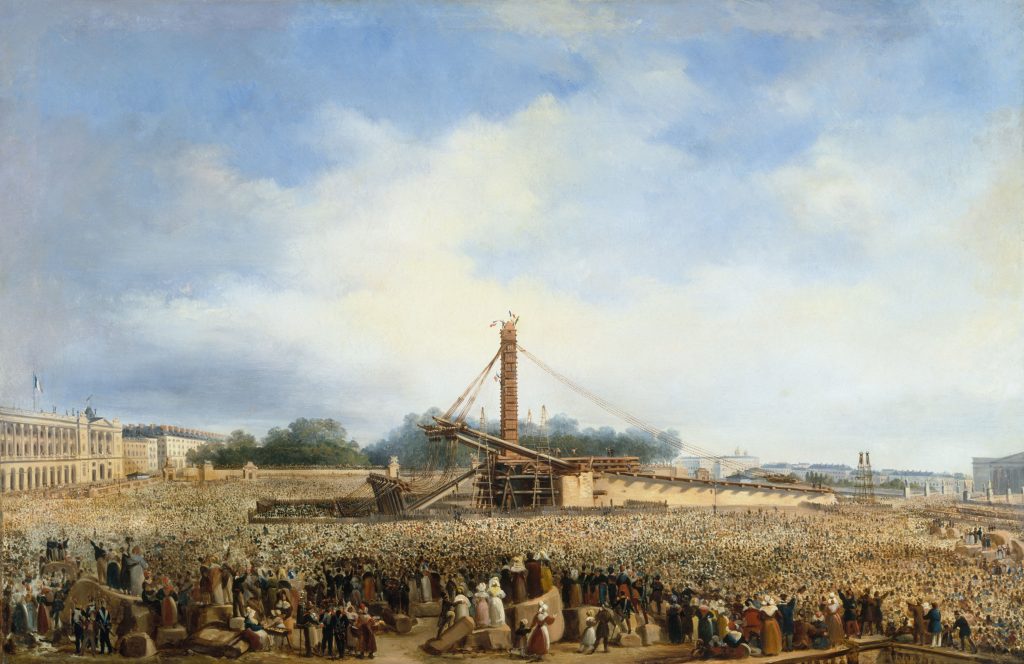
Did you know that the obelisk in the Place de la Concorde is the oldest monument in Paris? While it only arrived in Paris in 1836, it was carved in the 13th century BCE!
Two obelisks were carved under Ramses II for the enlargement of the Temple at Luxor, dedicated to Amon, one of the principal divinities of the Egyptian pantheon. They were offered to France in 1831 by the viceroy of Egypt, but only one of them was shipped; it was set up on 25 October 1836 in the Place de la Concorde.
The royal family was guillotined on this square, then called the Place de la Revolution, and various projects for monuments in their memory were imagined, first by Louis XVIII, then by Charles X after the fall of Napoleon. Louis-Philippe, having become King of the French thanks to the Revolution of 1830, was not in a hurry to celebrate Louis XVI: the obelisk allowed him to embellish the square without alluding to politics.

Between the gift of the obelisk and its arrival at the Place de la Concorde, several years went by, allowing caricaturists from the opposition to imagine the new monument in their own ways. This caricature targets the Count d’Argout, then Minister of the Interior, whose long nose became a favourite target of caricaturists, who ridiculed the mediocrity and corruption of the government. The obelisk-nose is surmounted by a small pear, a signature caricature of King Louis-Philippe.

The transport and erection of this enormous obelisk carved of a single block was a true technical exploit at the time; one realized by the leading engineers of the French Navy, who had to build a specially adapted boat to transport the monument, and then create a particularly elaborate system of winches and capstans to erect it. Onlookers were naturally drawn to this spectacle. It is reported that the royal family, fearing to the last that the stone would fracture, stayed hidden behind the windows of the Hotel de la Marine, appearing on the balcony only when the obelisk was safely in place.